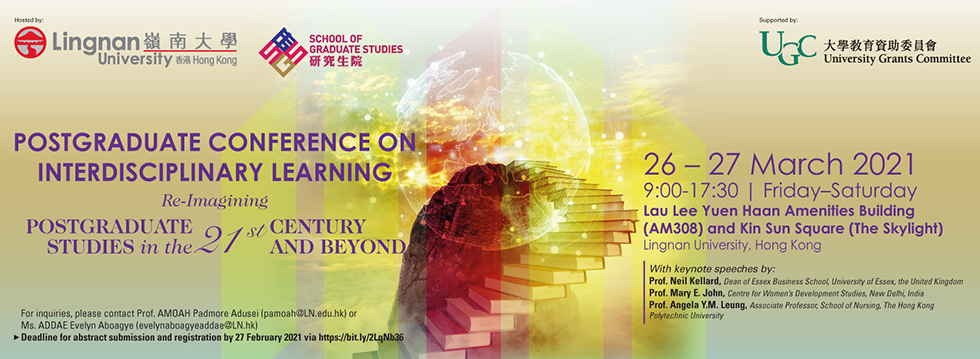
An overview on the effects of physical neighbourhood environment on active lifestyle choices
Start Date
26-3-2021 12:15 PM
End Date
26-3-2021 12:30 PM
Description
There is an ongoing discussion among the community in Hong Kong on making people in our city more physically active. An active lifestyle is no doubt vital to people’s health and wellbeing but our living environment seems imposed barriers to people of some ages and abilities from undertaking an active and healthy lifestyle.
This research paper would act as a starting point in making Hong Kong suitable for all people to undertake an active lifestyle, by conducting a comprehensive overview on: (1) what are the physical environmental features in the neighbourhood environment that are able to promote active lifestyle by enhancing recreational physical activities; and (2) how different people responds, physiologically or psychologically, to these physical environmental features.
An overview of peer-reviewed and grey literature was done to identify the list of perceived behavioural control factors in relations to the living environment that was associated with changes in behavioural outcomes of being active. These factors were analysed and categorised for discussion of effectiveness of existing active design guidelines. This review showed that comfort, safety and desirability in cities are the three determining factors for people perceiving whether they are capable in being active in their neighbourhood. People could perceive and respond the same objective environment differently, which make certain people, living in certain types of neighbourhood, be more vulnerable in being inactive, and thus unhealthy and unwell. Active community could only be promoted when the local authorities know well what prevent their people from being active, and conduct appropriate interventions.
Recommended Citation
Cheung, K. M. (2021, March). An overview on the effects of physical neighbourhood environment on active lifestyle choices. Presented at the Postgraduate Conference on Interdisciplinary Learning: Re-Imagining Postgraduate Studies in the 21st Century and Beyond. Lingnan University, Hong Kong.
An overview on the effects of physical neighbourhood environment on active lifestyle choices
There is an ongoing discussion among the community in Hong Kong on making people in our city more physically active. An active lifestyle is no doubt vital to people’s health and wellbeing but our living environment seems imposed barriers to people of some ages and abilities from undertaking an active and healthy lifestyle.
This research paper would act as a starting point in making Hong Kong suitable for all people to undertake an active lifestyle, by conducting a comprehensive overview on: (1) what are the physical environmental features in the neighbourhood environment that are able to promote active lifestyle by enhancing recreational physical activities; and (2) how different people responds, physiologically or psychologically, to these physical environmental features.
An overview of peer-reviewed and grey literature was done to identify the list of perceived behavioural control factors in relations to the living environment that was associated with changes in behavioural outcomes of being active. These factors were analysed and categorised for discussion of effectiveness of existing active design guidelines. This review showed that comfort, safety and desirability in cities are the three determining factors for people perceiving whether they are capable in being active in their neighbourhood. People could perceive and respond the same objective environment differently, which make certain people, living in certain types of neighbourhood, be more vulnerable in being inactive, and thus unhealthy and unwell. Active community could only be promoted when the local authorities know well what prevent their people from being active, and conduct appropriate interventions.

